Kubernetes Executor in Airflow will turn all the first level of tasks into a worker pod with Local Executor.
It means that you will get the Local Executor to execute your SubDagOperator.
In order to run the tasks under SubDagOperator after the spawning the worker pod, you will need to specify the configuration parallelism for the worker pod. So, in case you are using the YAML format for worker pod, you will need to edit it to something like this.
apiVersion: v1
kind: Pod
metadata:
name: dummy-name
spec:
containers:
- args: []
command: []
env:
###################################
# This is the part you need to add
###################################
- name: AIRFLOW__CORE__PARALLELISM
value: 10
###################################
- name: AIRFLOW__CORE__EXECUTOR
value: LocalExecutor
# Hard Coded Airflow Envs
- name: AIRFLOW__CORE__FERNET_KEY
valueFrom:
secretKeyRef:
name: RELEASE-NAME-fernet-key
key: fernet-key
- name: AIRFLOW__CORE__SQL_ALCHEMY_CONN
valueFrom:
secretKeyRef:
name: RELEASE-NAME-airflow-metadata
key: connection
- name: AIRFLOW_CONN_AIRFLOW_DB
valueFrom:
secretKeyRef:
name: RELEASE-NAME-airflow-metadata
key: connection
envFrom: []
image: dummy_image
imagePullPolicy: IfNotPresent
name: base
ports: []
volumeMounts:
- mountPath: "/opt/airflow/logs"
name: airflow-logs
- mountPath: /opt/airflow/dags
name: airflow-dags
readOnly: false
- mountPath: /opt/airflow/dags
name: airflow-dags
readOnly: true
subPath: repo/tests/dags
hostNetwork: false
restartPolicy: Never
securityContext:
runAsUser: 50000
nodeSelector:
{}
affinity:
{}
tolerations:
[]
serviceAccountName: 'RELEASE-NAME-worker-serviceaccount'
volumes:
- name: dags
persistentVolumeClaim:
claimName: RELEASE-NAME-dags
- emptyDir: {}
name: airflow-logs
- configMap:
name: RELEASE-NAME-airflow-config
name: airflow-config
- configMap:
name: RELEASE-NAME-airflow-config
name: airflow-local-settings
Then, SubDagOperator will follow the parallelism specified to run the tasks in parallel.
